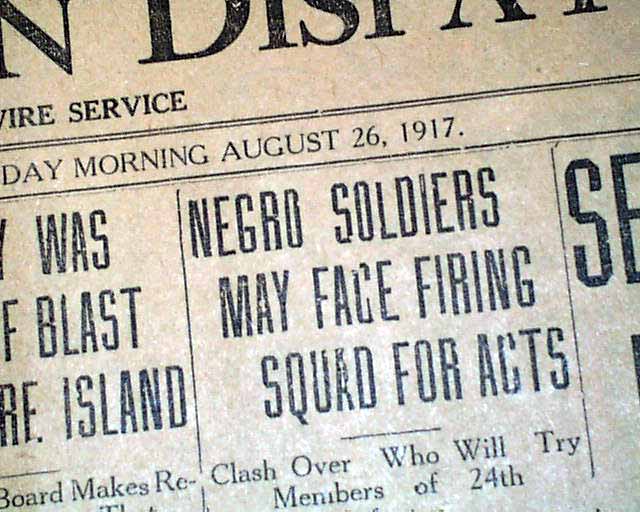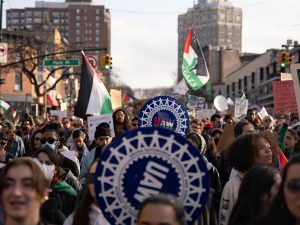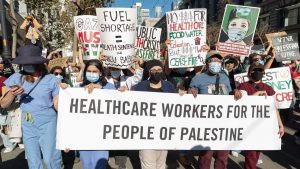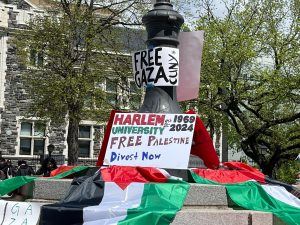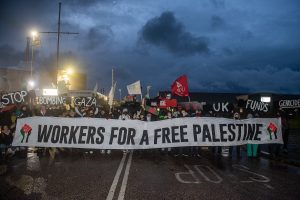This article was originally posted in Resistance
In the months following the US entry into the First World War in 1917, the US needed to train tens of thousands of soldiers quickly. Training camps were authorized in a number of locations, including the construction of Camp Logan in Houston, TX. On July 24th, 1917, the 3rd Battalion of the 24th Infantry were assigned to guard the new installation.
The all-Black Army unit was sent into Houston, where racist Jim Crow practices predominated and the Houston police had a reputation for corruption and violence against the local community. Lynching was common. A Black teenager, Jesse Washington, had been lynched in 1916 in Waco, TX, by a white mob. Despite assurances of fairness from the local political establishment, the troops received racist treatment from cops and the white community.
The role of Black troops
During the US Civil War, Black troops played a crucial role in the defeat of the slaveholders’ rebellion. Units like the Massachusetts 54th, made famous by the movie Glory, were instrumental in the Union victory.
Reconstruction followed the Civil War with the promise of freedom for the newly-freed former slaves. White resistance to Reconstruction fostered an environment of terror and lawlessness, with mass violence and lynching used against Freedmen. After Reconstruction was ended, Black people were robbed of the right to vote and police state conditions were enforced against Blacks. “The slave went free; stood a brief moment in the sun; then moved back again towards slavery.” WEB DuBois, Black Reconstruction
Following the Civil War, Black troops served in the genocidal Indian wars of the US West. The 24th Infantry were organized in 1869 through the merger of the 41st and 38th Colored Infantry. Many were veterans of the Civil War. The 24th fought in Cuba during the Spanish-American War, participated in the US occupation of the Philippines and also in the US incursion over the Mexican border in pursuit of Pancho Villa. Black soldiers were the target of racism from white civilians, as well as racism within the military. Black units often served in isolated areas and were given second- hand equipment previously used by white troops.
Jim Crow segregation was the law of the land. The US military was segregated, and Blacks could not join the US Marines or the US Army Air Corps. The only options were either service in segregated Army units or the most menial jobs in the Navy as porters or below decks. Black troops served under white officers, who were, quite often, racist southerners.
The early 20th century was punctuated by “race riots” – in reality anti-Black pogroms – in Atlanta, GA, Brownsville, TX, Onancock, VA, and Springfield, IL. It’s in this context that the Houston Troop Rebellion took place — only weeks after the bloody East Saint Louis “race riot” which resulted in up to 200 deaths, with more than 6000 left homeless, and extensive damage to Black-owned property.
The commanding officer of the 24th, Col. Newman, tried to get the unit reassigned, citing the pervasive racism in the city. When the soldiers arrived in Houston there were numerous racist incidents between the troops and construction workers working on Camp Logan, on segregated public transportation, and involving police. In early August, two city detectives boarded a street car and beat two soldiers. There were also tensions between members of the 24th and white National Guardsmen who were believed to have shot down Blacks fleeing the East Saint Louis race riot.
The uprising
Members of the 24th were restricted to base, with a few exceptions, and the troops were disarmed while on base. Likewise, members of the military police were forced to surrender any arms they carried. The unit was below strength in terms of experienced officers and non-commissioned officers (NCO’s). Twenty four of the most experienced NCO’s had been placed in officer training by the Army in response to demands of the Black community for Black officers in the military.
On August 23, two police officers, Lee Sparks and Rufus Daniels, broke up a dice game involving several Black youth on the street near the camp; shots were fired at the fleeing young people. As cops searched for the young people, Sparks entered the home of a woman named Sara Travers. Travers, who was doing her laundry, exchanged harsh words with Sparks who then arrested her and brought her outside in her bathrobe. Sparks, who had a reputation for racist treatment of local residents, reportedly threw Travers’ baby on the sidewalk.
A passing member of the 24th, Private Alonzo Edwards, stopped and exchanged words with the cops about their mistreatment of Travers. The cops placed Edwards under arrest and proceeded to pistol-whip him. Later in the afternoon, a military policeman, Corporal Charles Baltimore, approached Sparks and Daniels to ask why Edwards had been placed under arrest. Sparks then struck Baltimore and shots were fired at him while he fled. He was arrested later and severely beaten. Baltimore was later freed from custody through the intervention of two officers, Major Snow and a Captain Shekerjian.
Rumors spread through the camp that cops had killed Baltimore and that a white mob was coming to attack the camp. Given the recent events in East Saint Louis, it’s understandable that the troops believed themselves under attack.
Approximately 100 to 150 soldiers seized rifles and ammunition and marched in formation towards the police station, firing on whites who got in the way. Some were shouting “to hell with going to France, let’s clean up the police.”* A total of 15 whites, including 4 cops were killed. A Mexican-American bystander, Manuel Garredo, was also killed. Twelve whites were also wounded. A total of 4 soldiers were killed in the mutiny. Police officer Daniels, one of the assailants of Travers, Edwards, and Baltimore was shot during a skirmish and stabbed with bayonets.
As the column advanced, a car approached carrying a white artillery officer, Captain Joseph Mattes. Soldiers opened fire on Mattes, who was trying quell the rebellion, erroneously thinking he was a policeman. Afterward, the column went into disarray and soldiers began to return to camp.
Mainstream accounts claim that Sergeant Vida Henry, a leader of the rebellion, committed suicide under a tree near some railroad tracks after the uprising ended, but this contention is contradicted by the findings of a coroner’s inquest which found that the “cause of death…skull crushed and knife or bayonet wound. Location of wounds on head and left shoulder…” It is more likely that Henry was killed by vigilantes or vengeful cops.
Miscarriage of justice
One hundred and eighteen members of the 24th were tried for mutiny and 110 were convicted. A total of 19 were hanged and 63 received life sentences. Corporal Baltimore, who was severely injured and played no role in the rebellion, was tried with the others and executed.
The soldiers were tried in 3 tribunals. In the first court martial, 63 soldiers were charged with mutiny, murder and related offenses. Fifty four of the defendants in the first trial were found guilty of all charges. Five were found not guilty and four were found guilty of lesser charges. Thirteen of those convicted in the trial received death sentences and 41 were given sentences of life at hard labor.
On December 9th, 1917, the 13 were taken to a spot on the edge of Camp Travis in San Antonio and hanged. None of the executed were afforded any right to appeal and their bodies were placed in unmarked coffins and buried. The press were only notified of the executions after the fact.
White newspapers and politicians reacted with glee at the punishment meted out to the defendants. Black newspapers and civil rights organizations reacted with outrage at this miscarriage of justice. W.E.B. Du Bois wrote, “ They have gone to their death. Thirteen young, strong men; soldiers who have fought for a country which never was wholly theirs…we raise our clinched fists against the hundreds of thousands of white murderers, rapists, and scoundrels who have oppressed, killed, ruined, robbed, and debased their Black fellow men and fellow women, and yet, today, walk scot-free…” The Crisis, January, 1918
In the two subsequent trials, of the 54 put on trial only two were acquitted. Twelve received life sentences, 24 were given lesser terms and 16 received the death penalty. In response to the public outcry against the previous hastily organized executions, a review of the death sentences resulted in the commutation of 10 death sentences to life.
“After a military Scottsboro trial, thirteen men were executed without a chance to appeal to the War Department or the President. Sixteen others were later condemned to die but widespread public protests won amnesty for ten of these. All told, 19 were hanged and 61 were sent to long terms in the penitentiary, most of them for life. After a long campaign under the leadership of the National Association for the Advancement of Colored People, all of the imprisoned men were freed, except one who escaped and was recaptured. Later, two violated parole and were sent back…No attempt was ever made to punish the white policemen who provoked the uprising. ” Old Jim Crow in Uniform, by Walter Wilson, The Crisis, February, 1939
The emergence of the modern civil rights struggle
“For 300 years the Negroes of America have given their life blood to make the Republic the first among nations of the world, and all along this time there has never been even one year of justice…” Marcus Garvey, July 1917
Outrage at the East Saint Louis pogrom, followed by the racist injustice in Houston, energized the civil rights movement and the NAACP’s campaign against lynching. NAACP membership grew from less than 10,000 to more than 44,000 in the year following the massacre in East Saint Louis. The vision of Bolshevism abroad and Black revolt at home frightened the white establishment.
There is a state of emergency in Black America
It is clear that, for Black people, justice is just as elusive today as it was in 1917. US society has moved from Jim Crow to the New Jim Crow in the space of a century. Many hard-won gains of the civil rights era, another “brief moment in the sun,” have been undermined or destroyed. The majority of Black America faces mass incarceration, police violence, and unemployment at depression levels. There can be no justice from capitalist cops and courts.
The road forward requires independent mass struggles to win liberation for the oppressed. The fight against police brutality, mass incarceration and racism is an urgent task that must be taken up by all progressive people and the labor movement in a combined struggle against oppression and capitalism.
*Old Jim Crow in Uniform, by Walter Wilson, The Crisis, February, 1939
Other source material:
Two Texas Race Riots, Fred L. McGhee, PH.D., Fidelitas Publishing
Camp Logan, Houston, Texas 1917-1919, Louis F Aulbach, Linda C. Gorski, and Robbie Morin, Louis F Aulbach Publisher
Black Soldiers in Jim Crow Texas, Garna L. Christian, Texas A&M University Press


